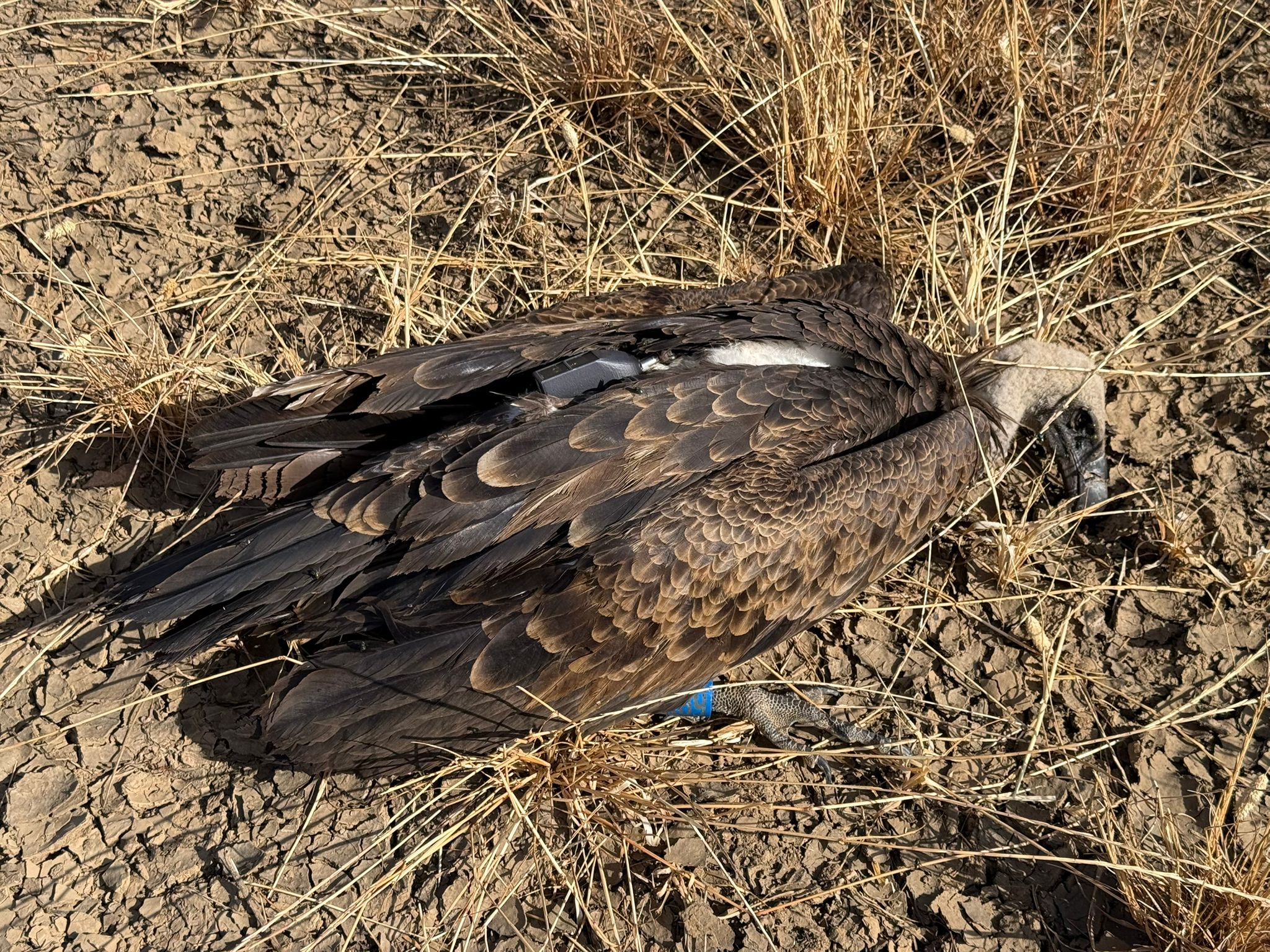The movements of the Cinereous Vultures tagged with GPS/GSM transmitters within LIFE Aegypius Return reveal very distinct individual patterns, which also result in very diverse life histories – and some sad endings.
Vulture ecology and ‘personality’
Cinereous vultures are philopatric animals that almost always return to their native region to breed when they reach sexual maturity. However, during their first few months, they are capable of travelling hundreds of kilometres, exploring vast areas while learning how to feed themselves and avoid threats… Well, in most cases.
This species clearly demonstrates that, in ecology, each animal’s “personality” has a huge impact on its natural history and survival.
Monitoring birds reveals distinct behaviour patterns
As part of the LIFE Aegypius Return project, 15 Cinereous Vulture chicks were tagged in the summer of 2023, other birds were tagged after being rehabilitated in Wildlife Recovery Centres and while being returned to the wild, and we even tagged an adult – the amazing 13 years-old Aravil. In addition, before this project began, other birds had already been tagged in Portugal’s current four breeding colonies, providing important information on the survival of the species and the threats and mortality factors they face. In total, there are around 40 Cinereous Vultures tagged in Portugal, which the LIFE Aegypius Return project team monitors on a daily basis.
Following these birds in detail also allows us to recognise individual patterns of behaviour which, even for birds from the same colony, can be markedly different… and not always with a happy ending.
Case study: Juniperus and Freixo
In 2023, two Cinereous Vulture chicks hatched in the Douro International Nature Park, out of the three nesting pairs that currently make up the breeding colony. One of the chicks was named Juniperus, after the juniper – the tree on which the Cinereous Vultures of this colony like to build their nests; the other was named Freixo, another native tree species common in the region, and also the name of the local town.
In December 2023, Juniperus took an extended flight to the south and has since ventured to the Alentejo (Southern Portugal), alternating between the districts of Évora and Beja, around 300 kilometres from its natal site. On the other hand, showing a completely opposite impetus, Freixo has never risked flights longer than about 2 or 3 kilometres. Highly loyal to its birthplace, it has never strayed far from the Douro cliffs. And it was 4 kilometres from its nest that it eventually died, on one of its first longer flights.
Investigating Freixo’s tragic end

The suddenly immobile GPS signal under a network of power lines over the cliffs triggered the alarm. Palombar and SPEA staff immediately travelled to the site, starting a difficult search through the cliffs and shrubs, and it wasn’t until the following day that they managed to locate Freixo, already dead, and recover the transmitter. The bird was sent for necropsy to the Veterinary Hospital of the University of Trás-Os-Montes and Alto Douro, where the cause of death was confirmed: collision with the power lines. Freixo had multiple fractures, from the head-on collision. Additional analyses will now be carried out to rule out the possibility that the collision was due to disorientation caused by illness or lead contamination, for example.

Lessons from vulture mortality
Having more adventurous behaviour doesn’t necessarily mean more preparation and greater survival. Of the 15 chicks tagged last summer, Freixo was the second to die so far. One of the chicks hatched in the Serra da Malcata breeding colony, ringed 1U and still unnamed, flew to Spain at a very young age and drowned in September near Bilbao, more than 400 kilometres from the nest. Following the signal from the GPS transmitter, the bird was eventually found in a stream by environmental agents from Cantabria.
A necropsy was also done at the Centro de Recuperación de Fauna Silvestre de Cantabria and samples were sent to the Junta de Andalucia´s reference lab (CAD – Centro de Análisis y Diagnóstico de la Fauna Silvestre de Andalucía) to test for potential poison or other contaminants.


Recovery of a very young dead Cinereous Vulture in the vicinity of Bilbao by Agentes del Medio Natural. ©Gobierno de Cantabria
Although these deaths are to be regretted – especially in the case of an Endangered species, where every individual is of great importance to the species’ recovery – they do reflect the different personalities and adaptations of each bird, possibly with repercussions in terms of natural selection. All the information collected is valuable, even if it’s not always what we would like to analyse. Knowing and understanding the bird’s behaviour patterns and the causes of mortality allows for more effective preventive action to minimise threats and conserve the species.
About the LIFE Aegypious Return project

The LIFE Aegypius Return project aims to consolidate the return of the Cinereous Vulture to Portugal and western Spain. It is co-funded by the European Union’s LIFE programme. Its success depends on the involvement of all the relevant stakeholders, and the collaboration of the partners, the Vulture Conservation Foundation (VCF), the coordinating beneficiary, and the local partners Palombar – Conservação da Natureza e do Património Rural, Herdade da Contenda, Sociedade Portuguesa para o Estudo das Aves, Liga para a Protecção da Natureza, Associação Transumância e Natureza, Fundación Naturaleza y Hombre, Guarda Nacional Republicana and Associação Nacional de Proprietários Rurais Gestão Cinegética e Biodiversidade.




